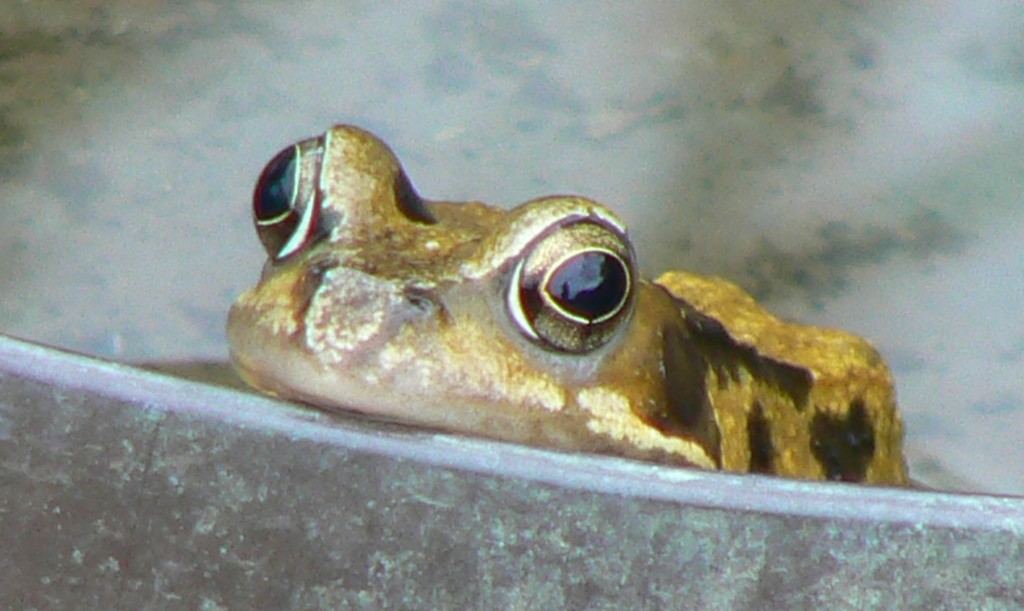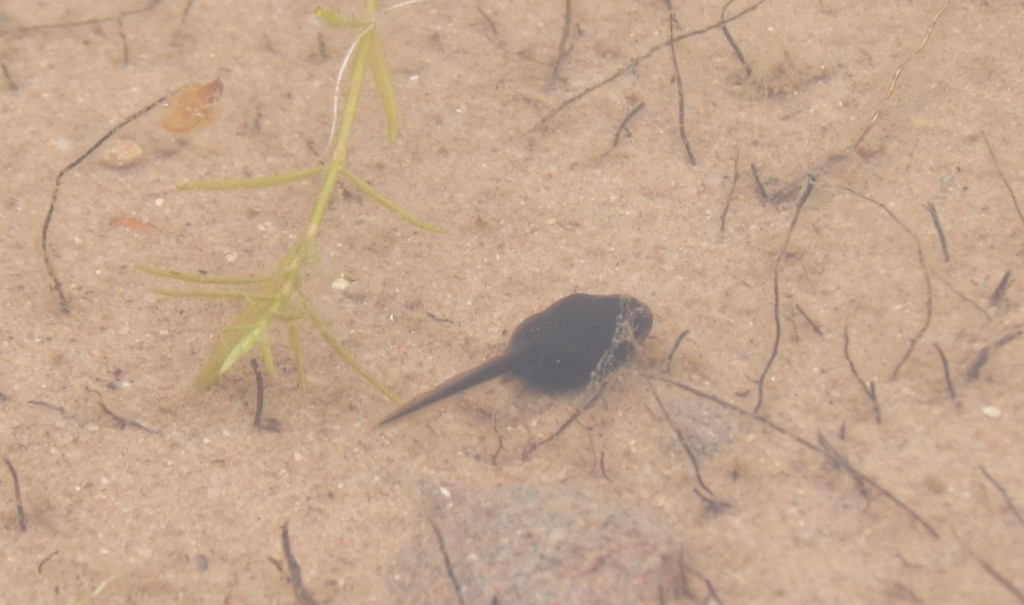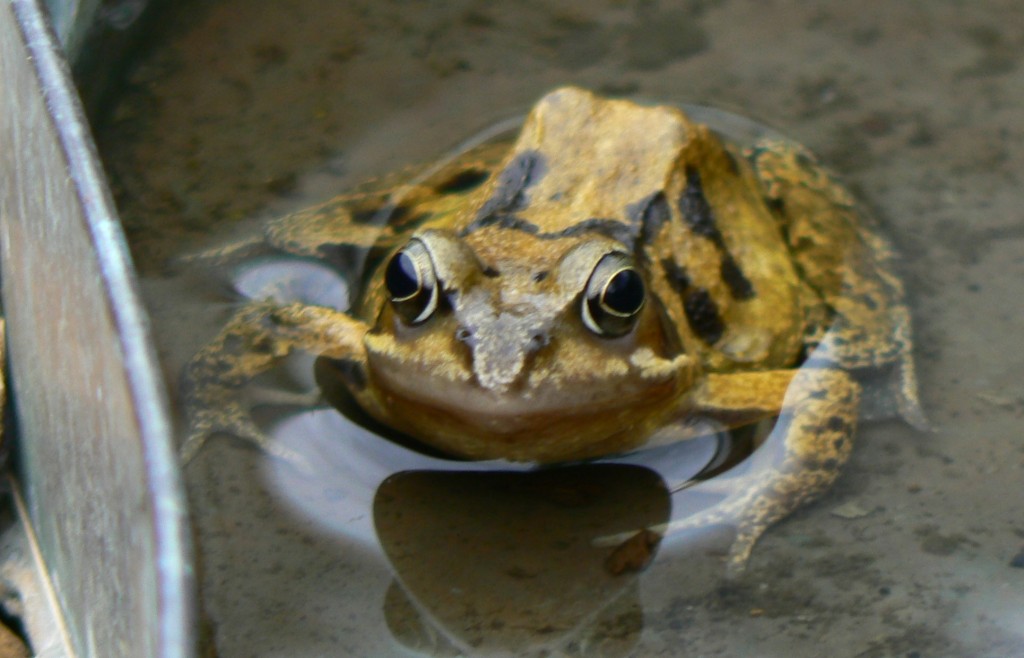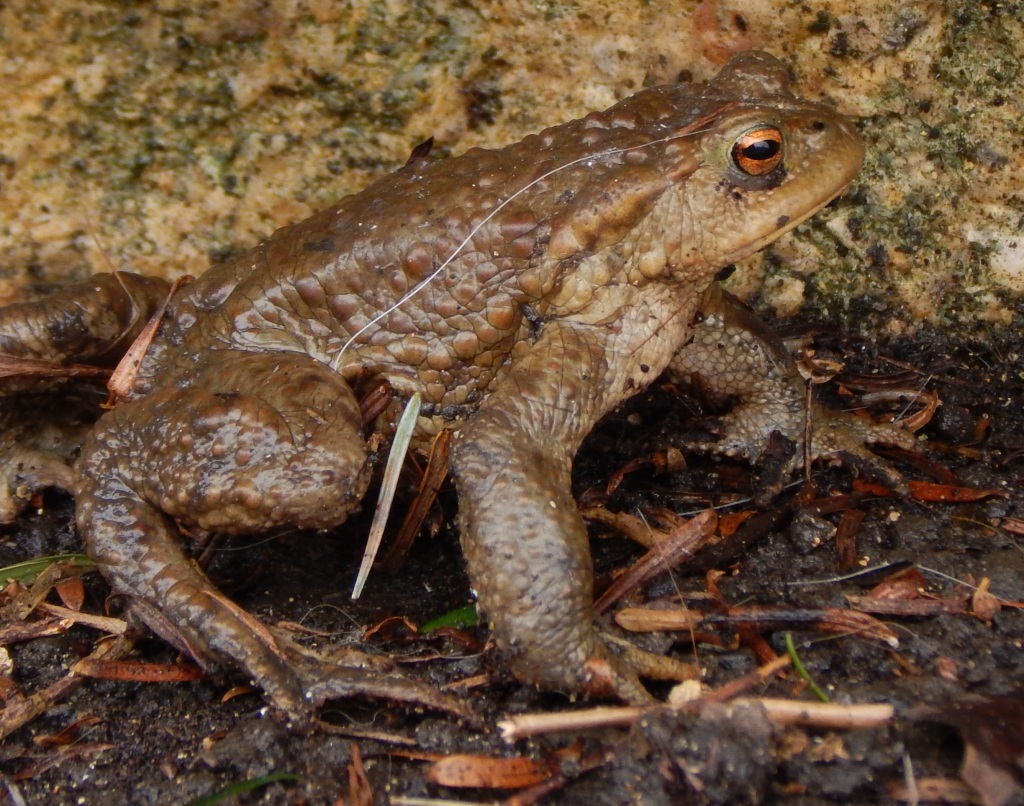
[295] Rana temporaria, Frog
Introduction
Rana temporaria is generally known just as a Frog but its full name is the Common Frog or European Common Frog or European Common Brown Frog or European Grass Frog.
All the 7 000 members of the order Anura are generally called frogs, except for about six hundred species in the family Bufonidae that are called toads.
I will consider all UK frogs and toads in this post including the Common Toad, Bufo bufo.
Taxonomy
Kingdom – Animals
Phylum – Chordates
Superclass – Tetrapods (Mammals, Birds, Reptiles and Amphibians)
Class – Amphibians
Order – Anura (Frogs – and toads)
Suborder – Neobactria (Almost all extant species)
Family – Ranidae (sometimes called true frogs)
Genus – Rana
Scientific Name – Rana temporaria
The Common Toad, Bufo Bufo is in the family Bufonidae
Name
The Old English name for frogs was frosc with various spellings, from Germanic origins. It seems to have acquired the ending ‘-g’ as a nickname in the same way as dog, pig, hog, stag and earwig.
The Old English toad is specifically English of unknown origin. It is cognate with tadpole (meaning toad-head.)
Rana is Latin for frog. Temporaria means timely, seasonal, transitory or temporary. Collections of frogs can appear in Spring each year to disperse over Summer.
It won’t surprise you that bufo is the Latin for toad.
Amphibians
I need to look at Amphibians, a very small group of animals that we will only meet once in this blog. They are four-legged vertebrates that typically live first in water and later on land.
The three orders of Amphibians are Apoda (snake-like Caecilians); Urodela (lizard-like Salamanders) and Anura (Frogs and Toads.) In the UK you are unlikely to see any of these apart from two or three types of Frog and Toad. You can get an idea of what makes them amphibian from the next section about Frogs.
Frogs (and Toads)
90% of the 8 000 species of Amphibians are Frogs and Toads.
There is no real difference between frogs and toads. Frogs are usually aquatic with smooth, moist skins. Toads are generally terrestrial with dry, warty skins; but there are many exceptions. Those within the family Bufonidae are called ‘true toads’ by zoologists.
Before I describe adult frogs, I will start with their development. They start in water as eggs, clumped together to make frogspawn, and go through stages of metamorphosis much like insects. The initial stages are called tadpoles and at first, they just look like the eggs with tails. At this stage they are aquatic and have gills and they feed on microalgae.

When it come, the change from tadpole to frog is rapid. The gills disappear, lungs appear and legs emerge. Many other changes take place as it becomes a carnivorous adult. At this stage there is still a long tail, longer than the rest of the body. The tail is absorbed later as the legs develop fully.
[Not all species have exactly the same full development stages.]
Adult frogs have the familiar form with a dumpy body, bulging protruding eyes, legs folded under the body and no tail. The hind legs are long and enable the frog to move in a jumping hop.
Rana temporaria
As with many wild animals, my early ideas about frogs came mostly from cartoon animals and anthropomorphised children’s literature. I imagined them as being fairly large with smooth, bright green skin. They are actually only two or three inches long and not brightly coloured. (That’s about six to nine centimetres.) Wikipedia with delightful vagueness says that Rana temporaria can be olive green, grey-brown, yellowish or rufous and can occasionally be red, black or white. It also adds that they can lighten or darken their skin to camouflage themselves and the male generally turns blue-grey in the mating season.




They do have irregular darker blotches on their backs.
Males are smaller and have swellings on their front feet to hold on to the female during mating, which is external.
In the UK they usually hibernate in mud or piles of leaves – from about October to January. At the age of about three they return to their place of birth to lay eggs and mate.
They feed on invertebrates – insects and their larvae, spiders, snails and worms.
Habitat
The Common Frog is found over most of Europe. It is by far the most common frog in the UK.
They live in damp places, near ponds or in long grass. When we had a pond in our garden, we often found frogs hiding in the undergrowth. Unfortunately, our cat also found them and would bring them inside to us as presents!
Other Notes
The Edible Frog, which supplies the well-known French delicacy ‘Frogs Legs,’ is an unusual hybrid called Pelophylax kl. esculentus. This is a hybrid between Pelophylax lessonae and Pelophylax ridibundus that is fertile by hybridogenesis. [It is a klepton, which explains the ‘kl.’ in its name. The hybrid species cannot mate with another hybrid but can reproduce by mating with the species of either parent. I have simplified this – or, to be more precise, I don’t fully understand it!]
See also
Bufo bufo, the (Common or European) Toad, is found over most of Europe, but not the island of Ireland. It’s the most common toad in Britain.
It is much larger than the Common Frog and can’t really jump. It moves by walking or a shuffling series of jumps with all four legs. It emerges at dusk and feeds on invertebrates. Small items can be caught with its long tongue and food is swallowed as it has no teeth.

The toad has cultural significance and it used to be associated with the Devil and with witches.
Mr Toad was immortalized in The Wind in the Willows by Kenneth Grahame. See [040] Water Vole.
